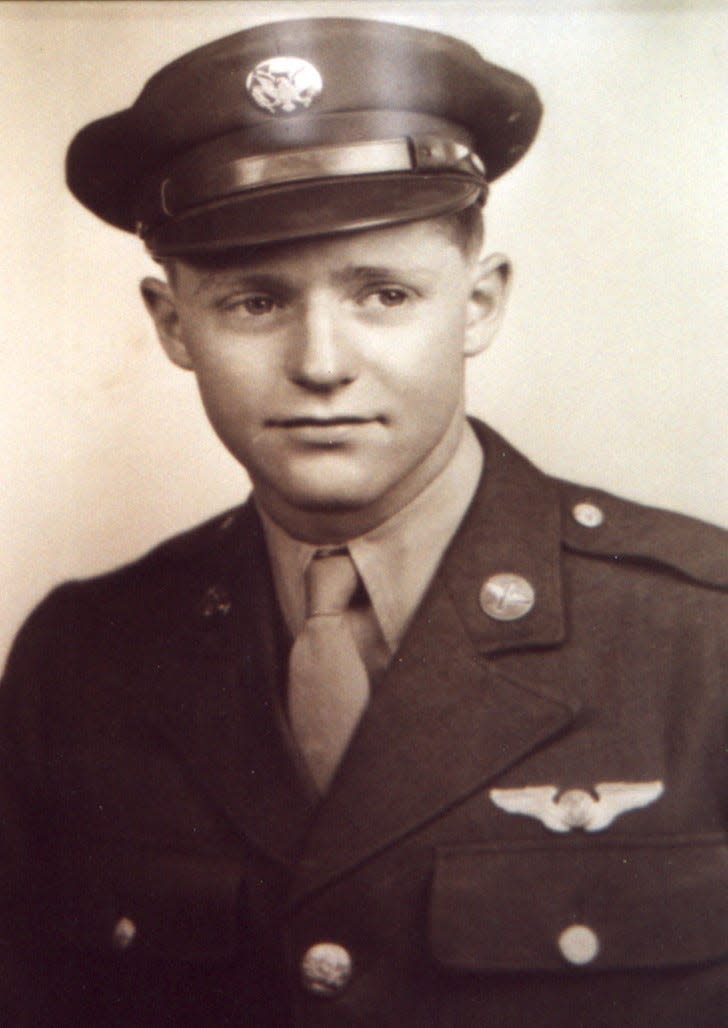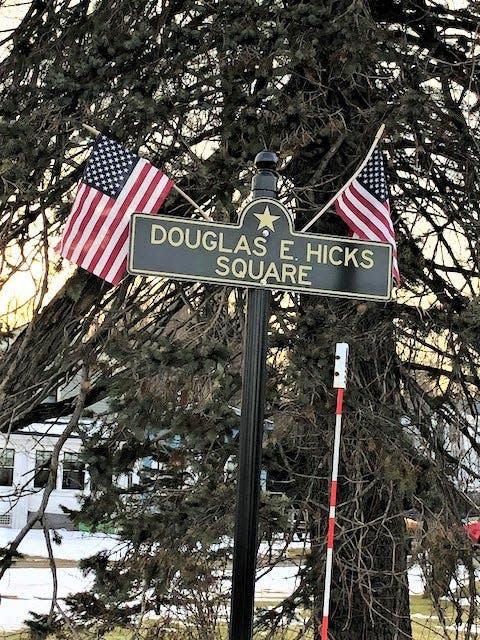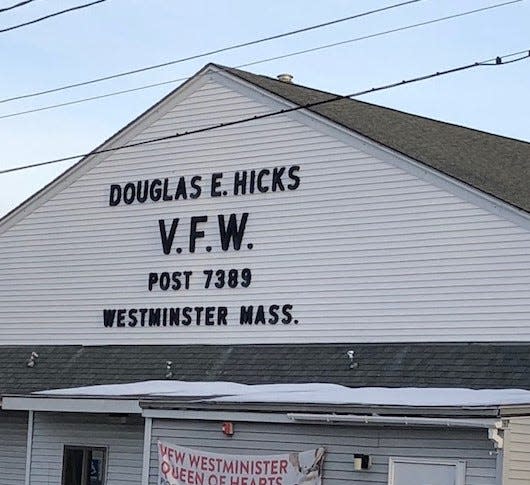Military was the destiny of Westminster's Douglas Hicks, who died in World War II
WESTMINSTER — Serving in the military seemed to be the destiny for Douglas E. Hicks of Westminster, who would go on to become one of the more familiar names associated with World War II in town.
His father Charles served in the Navy during World War I, while Douglas’ older brother Rayfield became a mechanic with a World War II bombardment squadron and his younger brother Lawrence enlisted in the Marines in 1945.
Following his older brother's footsteps, Douglas was inducted into the Army Air Force in 1943 and became an aerial engineer on a B-17 Flying Fortress while stationed in England.

Sadly, Hicks was killed in action over Germany on Sept. 28, 1944 and years later the VFW Post 7389 in Westminster was named in his honor
Mark Landry, the veteran’s graves officer as well as a member of the town’s veteran’s committee for the Westminster Historical Society, provided a good deal of information to help complete this column, as well as on each soldier from Westminster.
This is the continuation of the series Remembering Local World War II Heroes.
Tech. Sgt. Douglas E. Hicks (1924-1944)
Douglas Elwood Hicks was born on Dec. 14, 1924 in Gardner, to Arthur Charles and Esther Helen (Gates) Hicks. His father Charles was a carpenter, while Esther served as the Westminster town clerk for many years.
The family lived in a house on Main Street but moved to 15 Bacon St. in 1928. Hicks was a Boy Scout, and attended Fitchburg High School from which he graduated in 1942. He was also an active member of the Westminster town band.
After high school, he worked at Cowdrey Machine Works in Fitchburg. He was inducted into the Army Air Force at Fort Devens on April 13, 1943, and placed on active duty a week later.
He was transferred to Miami Beach, Florida, where he went through basic training and qualified for aircraft mechanics school.
More: Greater Gardner's first WWII victim hailed from Otter River

His older brother Rayfield Millard Hicks studied avionics and became a mechanic in the 312 Fighter Squadron and the 15th Bombardment Squadron. His younger brother Lawrence Knowlton Hicks would later enlist in the Marines in 1945. He was training in California at the time of the Japanese surrender in August, ending the war.
After basic training, Douglas was sent to Amarillo, Texas in June of 1943, where he rose to the rank of corporal. Just prior to Christmas, he transferred to Kingman, Arizona for a course in gunnery training.
Following a 10-day furlough to his home in Westminster, he reported to the airfield in Salt Lake City, Utah. There, he was assigned to a B-17 heavy bomber crew as a flight engineer.
More: Templeton HS athlete and baseball hero perished in Philippines
Corporal Hicks spent some time training at an airbase in Dyersburg, Tennessee where he became a sergeant. As an airplane mechanic-gunner flight engineer, he and his crew would board the John Ericsson, a German built liner recommissioned as a troop ship in early July 1944. The crew set sail for Liverpool, England, reaching that port on July 13.
Sergeant Hicks would make his first bombing mission on July 29, to the Leuna Synthetic Oil Plant in Merseburg, Germany. He would go on to record 20 missions, but needed another 15 before completing the required 35 which would allow a return home.
Circumstances of Hicks' death not learned until later
Tragically, Hicks’ life ended on Sept. 28, 1944 at the age of 19, although the circumstances were not known for some time.
On Oct. 13, 1944, his parents received a letter that he was missing in action over Germany. According to a later notification from the International Red Cross in January of 1945, it stated Hicks had drowned in a lake near Dettum and his body washed ashore.
The actual truth would not be known until the Allies overran the area where Douglas had landed on their push toward the interior of Germany. The local residents engaged for slave labor by the Germans would later notify Allied officials that Hicks parachuted safely to the ground in a field roughly 1,200 meters east of Dettum around noontime on Sept. 28.
A few minutes later, Karl Herman Fritz Rumph, a German second lieutenant, approached Hicks carrying a carbine and ordered anyone in the area to leave. Sgt. Hicks, unarmed, began walking toward Rumph with his hands raised, expecting to be taken as a prisoner.
Suddenly, Rumph raised his weapon and fired a shot at Hicks, but it missed. As Hicks attempted to scramble away, Rumph fired three more shots, one of which killed Sgt. Hicks.

Witnesses would later report that Rumph would coldly remark, “I had just fired my best shot in a long time.”
Ernest Tuescher, the radio operator on Hicks’ crew, would later note on the 303rd Bomb Group’s website: “I was radio operator on the Walter Mayer crew. We were shot down on Sept. 28, 1944 on the mission to Magdeburg. We had our two right engines shot out and made it back to seven miles on the U.S. side of the front lines, near Wilz in Luxemburg, where we bailed out.
Douglas Hicks, our engineer, had bailed out near the target. Two German storm troopers went to pick him up. They began beating him up. Some slave laborers went to his aid. When the two SS men saw they were outnumbered, they shot and killed Hicks.”
Hicks initially buried in Germany
Hicks was buried in the churchyard in Dettum alongside two other American fliers on May 3, 1945. His body was later exhumed by the American Graves registration command and he was reinterred three days later at the U.S. Military Cemetery in Margraten, Holland.
Finally in 1949, by the request of his parents, Sgt. Hicks’ body was once again exhumed from the grave in Holland and brought back home to be laid to rest in a family plot at Woodside Cemetery in Westminster.
Hicks was later posthumously awarded the Purple Heart, the Air Medal with three Oak Clusters, the World War II Victory Medal and several battle stars.
In 1946, the Douglas E. Hicks VFW Post 7389 in Westminster was named in his honor, while the nearby intersection of Main Street and Knower Road is also named in his memory.
Comments and suggestions for Remembering Local World War 2 Heroes can be sent to Mike Richard at mikerichard0725@gmail.com or in writing Mike Richard, 92 Boardley Road, Sandwich, MA 02563
This article originally appeared on Gardner News: Westminster's Douglas Hicks killed in Germany, VFW post named for him

